Safety Note: Discuss with your healthcare homie before engaging in any of the methods I discuss. Bodyweight Exercise Overcoming Isometrics Yielding Isometrics Static Muscle Contraction If you don’t have one use your best judgment.
The human body will eventually adapt to whatever stimulus is provided. Due to the stimulus of modern life, it’s not uncommon for folks to have some type of muscle imbalance/posture issues. I see being active as a medicine for this illness. Only my medicine won’t be heavily advertised on television.
*In an alternate reality*
“This program is brought to you by Nerve and Muscle Fitness… “A push-up a day keeps the allopathic doctor away” ”
One of several imbalances personal trainers are trained to look for is an imbalance in the Psoas which is a muscle that links your spine to the lower body. It starts in the lower back and runs downward at an angle toward your thigh bone. This imbalance is also called, the “Lower Crossed Syndrome.”
This, or any muscle imbalance, occurs because a certain set of muscles is overactive meaning they’re in a state of higher contraction intensity…
…and muscles on the opposite side are underactive…
For the Lower Cross Syndrome, the overactive muscles are the PSOAS and possibly the lower back muscles. The underactive are the gluteus maximus(the butt), the hamstrings, and abs.
Relaxation techniques do work which is what’s seen in somatics which I covered briefly.
Stretching can work to a degree but only temporarily.
Activation is the long-term strategy.
Activation of the underactive muscles and teaching them over time to work in harmony with the surrounding muscles and those on the other side that are overactive.
Backward walking and bridges are effective tools for this.
Backward walking might collect stares from others but it doesn’t have to be for long periods. If you have access to a treadmill even better. I would often see folks in the gym warm-up by walking backward for 5 or 10 minutes. With my clients, I would add a sled so they’d be walking backward while pulling a weight but just heavy enough to wake up the muscles and nervous system. But starting small/going slow maybe three to five minutes every other day is a good start. If you have enough room in your place of residence doing it back and forth between opposing walls like a ping pong is also an option. If you haven’t done this before just go slow and give it time. You’ll become adept at backward walking very quickly.
Bridges/glute bridges are also an option though it depends on the person for you have to be comfortable with getting down on the floor and back up. You’ll be rotating at the hips while driving force through your legs into the ground. To create a better muscle balance, I’d recommend doing these often to just nourish your system whether that’s every day or multiple times a day. It should feel like play or practice.
If you don’t like getting on the ground you can stand up and do the overcoming isometric version, the Low Curb Leg Press. Standing close to the wall you bend and drive your other leg into the wall for just a few seconds preferably six to eight. The wall and your other leg will keep you from moving. If you feel you need to hold onto something for balance please do. This can be done consistently just as long you’re not trying to go all out.
Small doses of backward walking, bridges, and or low-curb leg press throughout the week. Jot down how much you’re doing each week and how you feel. If your psoas feels better decrease the frequency of these methods but still engage in them regularly.
The human body is all about signals, give it the best one. This can be done in the gym but it can also be done without much equipment. All we need is some knowledge and creativity.
Minimalist Fitness
That video is almost two years old. Where has the time gone? It's like the days are getting shorter or something….
My experiences in life have molded my approach to fitness. A constant theme is how little we need to get stronger, faster, or bigger. This later planted the seeds for me to see the value in some facets of alternative health.
I first stumbled on a book titled, “Convict Conditioning” written by an author under the pseudonym, “Paul Wade.” This Paul Wade was supposedly in prison for a few decades and taught others how to get stronger using their body weight. There were a few anomalies in his historical narrative of physical culture as well as his approach to prison training compared to more well-known methods but it was pretty good information I put to good use. By the time I was graduating from the Naval Academy, I was a 175Ib lean-mean-fighting-machine.
Nothing but one-legged squats…
Handstand Push-ups…
Pull-ups….
and running.
These movements weren’t at the peak of what could be performed with calisthenics/bodyweight exercise. In addition, to the muscle/full-body coordination that comes with calisthenics, other methods further enhance the contractile/force-generating capabilities of your muscles. This is where Overcoming Isometrics and or Maxick’s Muscle Control come in.
But for those that aren’t there, there are a few mini-steps to get there. This is what I often mean by “Progressive Calisthenics.” Instead of using bodyweight exercise for warm-ups or some super high-rep conditioning workout, you treat it as strength training.
Anybody can use this. A young man about to join the Marine Corps can utilize archer push-ups (or any advanced variation) in his workout to gain strength and muscle meanwhile an older individual, acting as the leader of a country and whose cognitive abilities are questioned, can be using push-ups with his hands on an elevated surface to do the same.
These two individuals are both at their peak capabilities and using a movement that they can’t do more than 15 repetitions of. This applies to all bodyweight movements….
This video is a primer for the following post which will provide those who are interested with more detail on the steps as well as a training schedule. Everyone has a 1-15 repetition movement, a 15 - 25, and a 25 and beyond. It’ll take some courage and a free afternoon to find these.
Isometrics (Overcoming Isometrics, Yielding Isometrics & or Muscle Control)
In Okinawa Japan back in 2016 I got into overcoming isometrics(OCIs) consistently.
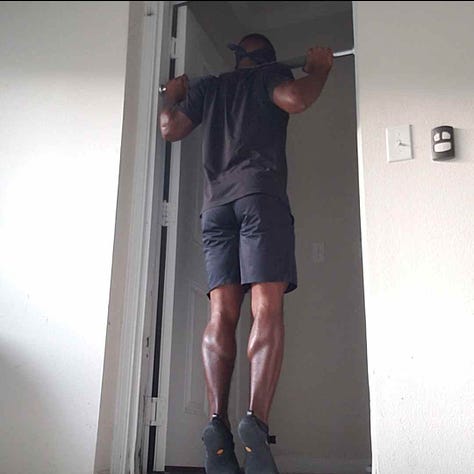
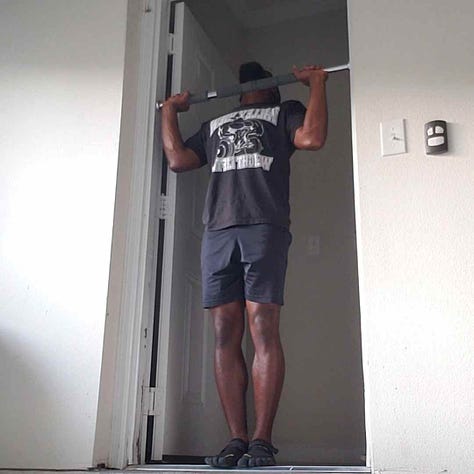
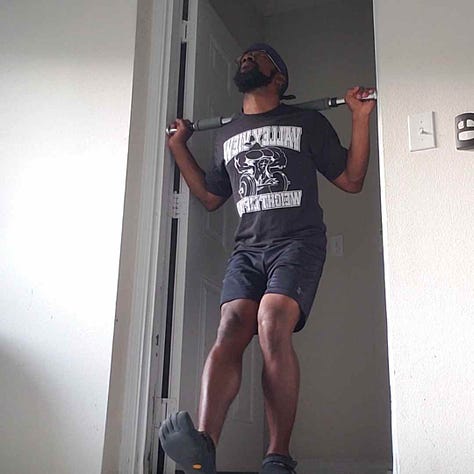
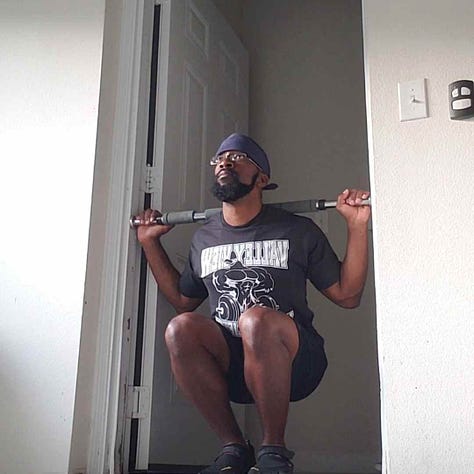
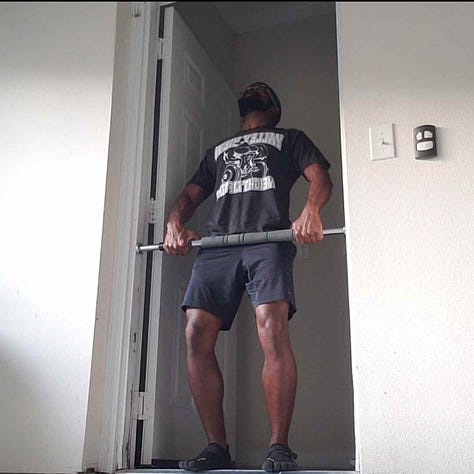
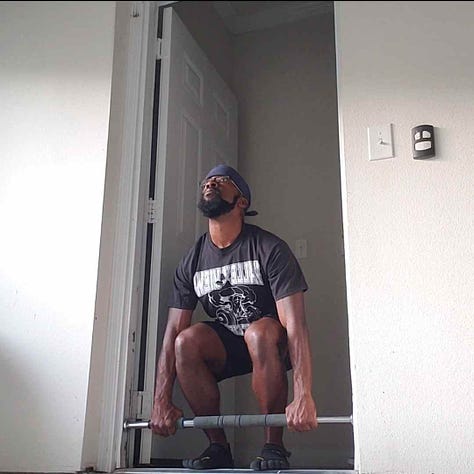
I had bought this doorway pull-up bar that I could safely screw into the doorway and mimic various lifts. I would do this for eight sometimes twelve seconds at a time and just one force generation per position. With the gel on its sides, screwed into the doorway hard enough, it didn’t move…and didn’t scratch the paint either.
This thing was rated at holding 300 pounds not sure about pulling upwards though.
But the bar screwed into the doorway was my immovable object. This is the principle behind OCIs. Exert force against an immovable object and get stronger.
What I found that although I was training my strength it greatly improved my conditioning. Because of the rapid strength increases with this form of training, I felt lighter. Feeling lighter will help you to jump higher, run faster, run farther etc.
This doesn’t mean that one could ignore conditioning-style workouts, but this does mean that you have a powerful tool in your training belt.
Not only did I feel lighter I felt more energetic and this was throughout the day not just a post-workout high.
By increasing the force-generating capabilities of my muscles and connective tissue, I was getting at something deeper. I was more energetic and this carried over to my focus. It’s like I was getting at the root. I was getting to my, Nerve and Muscle…
A similar but even more direct approach was developed by a guy named Maxick in the late 1800s/early 1900s and lasted till the 1980s. Instead of groups of muscles and connective tissue one would focus on individual muscles at a time and work to increase not only their capability to generate force but their capability to relax as well.
This would then be combined to either make bodyweight movements more difficult or achieve greater poundage in lifting weights which Maxick was known for and even competing against lifters in higher weight classes.
We aim, first and foremost, at the improvement of Circulation, it being through that channel alone that every function of the body can gain vigor, and acquire increased activity and endurance. This is not attained by several hundreds of movements gone through daily with dumbbells or some apparatus, nor by the tremendous output of energy which this involves. The energy must be retained and added to, and this is the end which we have in view in our System, as a whole of our teaching consists in the conservation of energy, by economizing the output; and, furthermore, in showing how to direct the energy to the best advantage. - (Health, Strength And Will Power, Maxick And Saldo.)
Teach your muscles to contract to a greater degree and this can improve many areas not just in your performance but your health.
Then there’s yielding isometrics which is limb vs limb that I first stumbled on through John E Peterson’s “Isometric Power Revolution.”
This book is mainly yielding isometrics and static muscle contraction like out of Maxick’s system. The link I provide you is free but you can still buy a physical copy from amazon. I don’t get money from advertising his stuff but the book has many great reviews. Heck, you might like his stuff better than my e-book lol.
Where Is This All Leading To?
Muscles can be used for work or to make one more appealing to a potential partner. But there’s also a third option.
"I only became a weightlifter in order to prove that the “control of the muscles” was the greatest consideration in the performance of feats of strength; and I reason, with obvious logic, that if I am able to perform feats of strength far beyond anything ever accomplished by the most scientific lifter at my weight, by controlling the muscles, I can put that power to a much greater use; in fact, to the greatest use of which this world is in need—to the curing of disease" (Maxick 7, How To Become A Great Athlete)
Training them in the right way can improve one’s energy. Your muscles can act as a capacitor. If you need to walk up a flight of stairs, perform work in the garden, or your body needs some power to undergo a repair process, that energy is there. It is because time has been put in over the months and years to add energy to the system/money to that bank. If that bank gets robbed you can still put money back in.
But this concept I have talked about repeatedly in terms of, “Potential Energy.” I didn’t get close to/achieving the one-arm pull-up till I started devoting more time to my nerves and muscles instead of the actual movement. Over the days and weeks, I would engage in OCIs strengthening my connective tissues and increasing the ability of my muscles to generate force. Randomly during the day I’d sometimes lift my arm overhead during this process and on some days and would say,
“Yeah, I can do it.”
It’s a feeling. Training will help you to know your body better.
However, I didn’t execute a one-arm pull-up because that would expend my energy. So I kept at the OCIs and occasionally lifted my arm in the air and felt if the strength was there and when I felt there was enough in the tank to pull off one maybe two one-arm pull-ups in 30 minutes, I’d set up the camera and go.
Then I’d go back to OCIs to build up my strength/energy.
“By giving nothing out, I was slowly conserving energy, and as the commerce of the world, interest is given for money, and the more money, the more interest; so, the more energy conserved, the more strength is proportionally attained, and with interest, because it reacts upon itself.” (p 9 Maxick, How to become a great athlete)
Maxick did something similar with his system. Sometimes he wouldn’t lift for weeks but still be able to come back and wow people with the pondages he was able to hoist off the ground.
Potential energy, and or “Muscle Capacitance” is an alternative path to getting stronger.
“In this process—known as cellular respiration or oxidative phosphorylation—the mitochondria act like small cellular batteries, using an electrical voltage across their membranes as an intermediate energy source to produce ATP…….
……The mitochondria were electrically coupled and able to rapidly distribute the mitochondrial membrane voltage—the primary energy for ATP production—throughout the cell.
“The discovery of this mechanism for rapid distribution of energy throughout the muscle cell will change the way scientists think about muscle function and will open up a whole new area to explore in health and disease,” Balaban says”1 - Muscle Mitochondria May Form Energy Power Grid
This is something more on the scientific side of the bro-science I’m talking about. But the energy in the muscle can be there for physical exertion, or it can be there for other things.
This modern life is robbing us of our energy. I believe training in the right ways can remedy this.
Overall what I hope to establish through Nerve and Muscle Fitness is a combination of methods to help people move with better efficiency as well as a body that is more resistant to the things being thrown at it intentionally or unintentionally because of it’s improved mitochondrial production…
…and maybe throw in the groundwork to cripple some oppressive entities in our modern day.
Movement, balance, and coordination are important. That’s where the progressive calisthenics come in. But cultivating energy whether that’s ATP/Mitochondria, Chi, Vigor, that-dawg-in-you, etc is where the isometrics come in.
Wrap Up
One of yall helped me to realize that I didn’t give yall enough of a forest view of my training approach. This will eventually become an e-book I’ll make as a gift for a free subscription to replace the OCI one.
Progressive calisthenics alone can keep one busy for decades if they know what they’re doing. So can each of the other training modalities I talked about here. How it’s combined is a tricky one and up to the individual. Progressive calisthenics and OCIs I’ve changed around several times depending on my goals in the short term.
I’ve done three workouts a week, two a week, mini-workouts. There are so many options my head is about to explode just thinking about it. However, whatever workout schedule I’m on I try to stick to this quote from Mr Liederman.
“If after you exercise, your bath and your rub-down, you feel fit to battle for a kingdom, then your schedule is right. ” (p 150 Liedeman, Secrets of Strength)
Keeping in the range of minimal energy loss/energy cultivation is best for most. There can be workouts where you go all-out but I don’t believe those should be the norm.
Just start slow, keep it simple, and try to cultivate strength your body will do the rest. If you feel bored just research and throw in some of the other things I discussed here in your schedule and see where it takes you.
More to come.
Thank you for making it to the end and let me know your thoughts below.
Until next time and happy Friday.
Muscle Mitochondria May Form Energy Power Grid
https://www.nih.gov/news-events/nih-research-matters/muscle-mitochondria-may-form-energy-power-grid




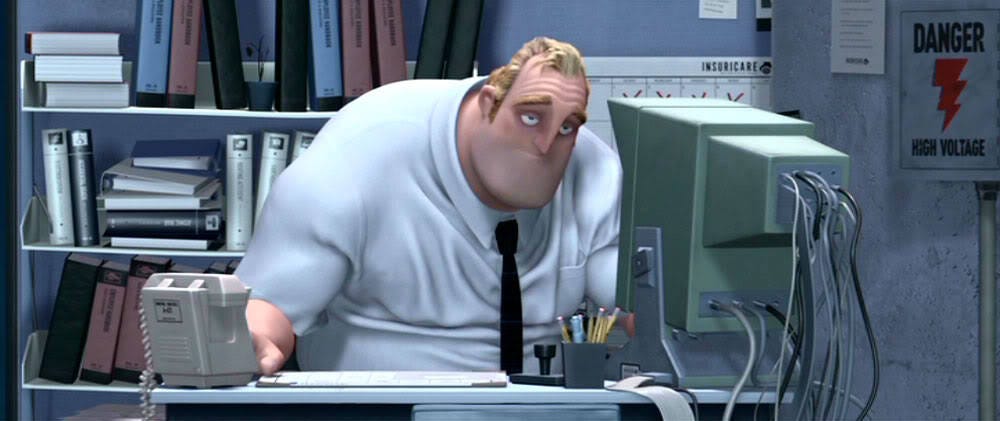
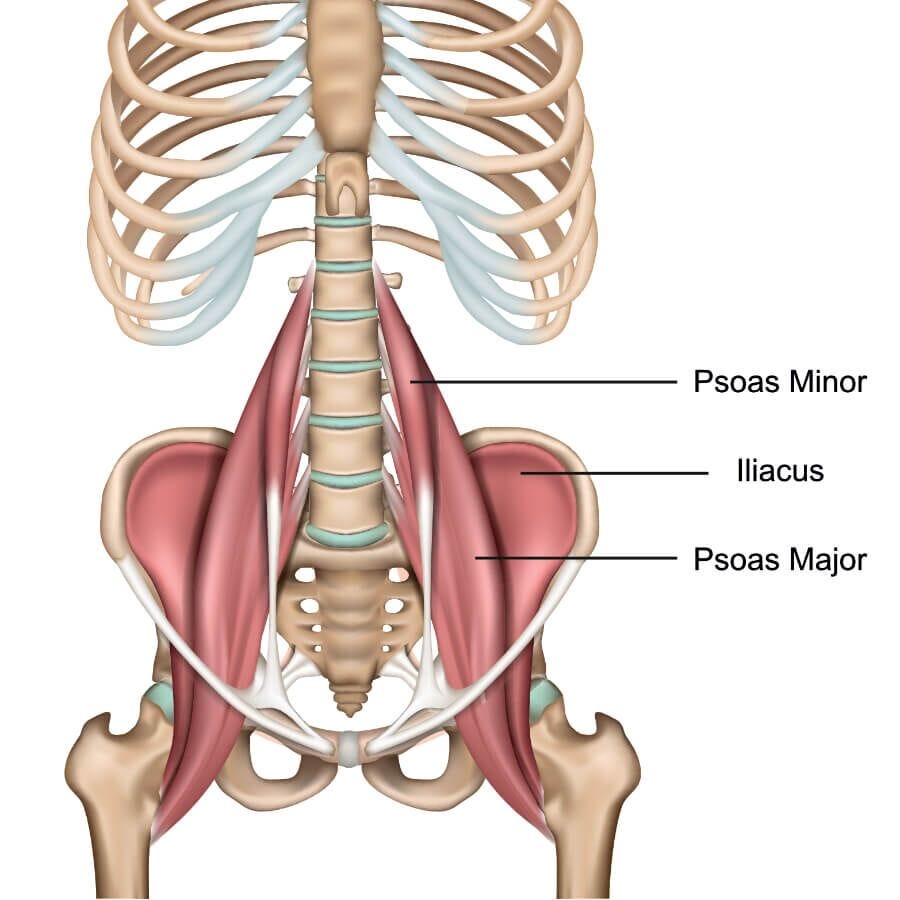
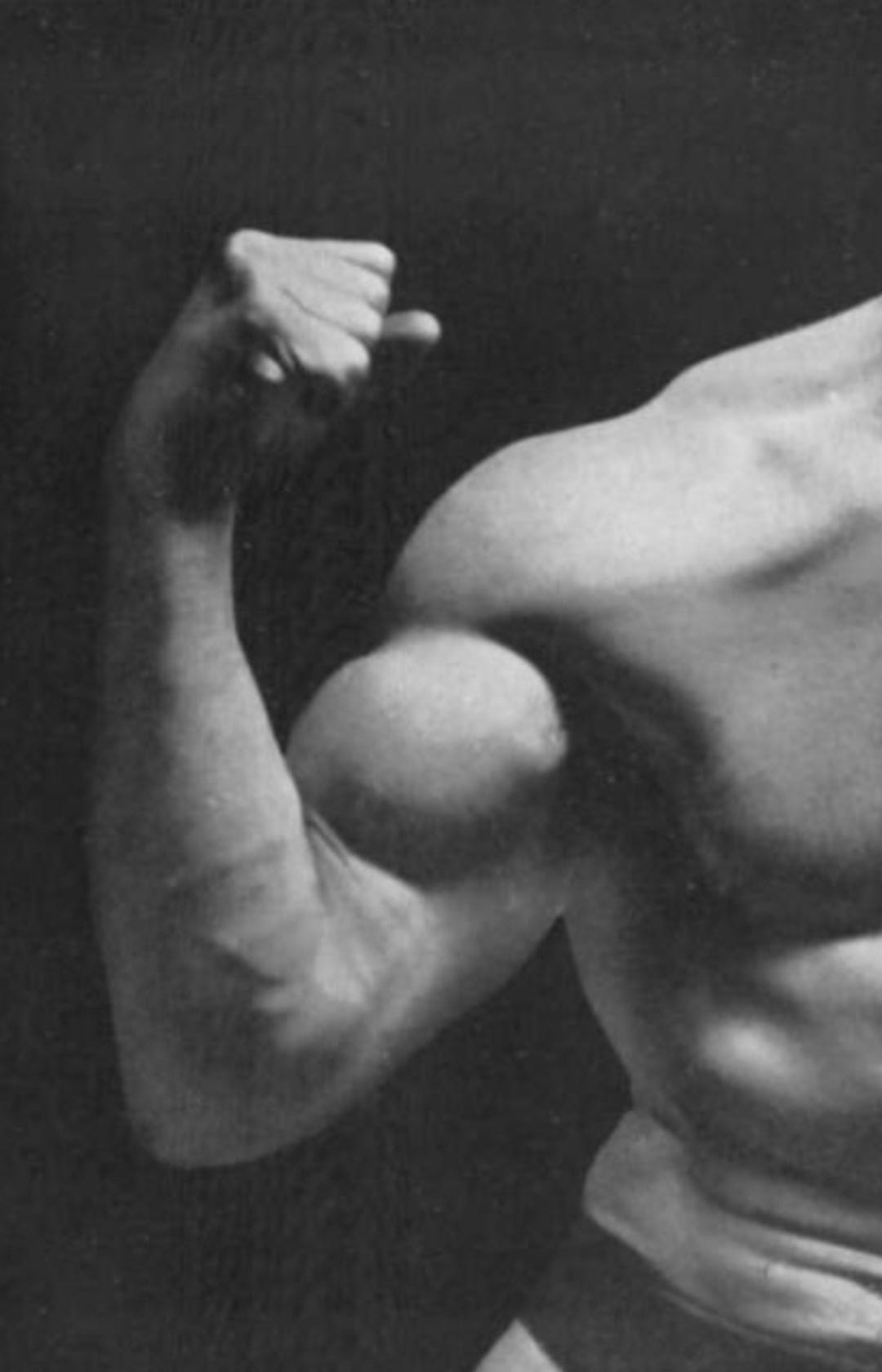
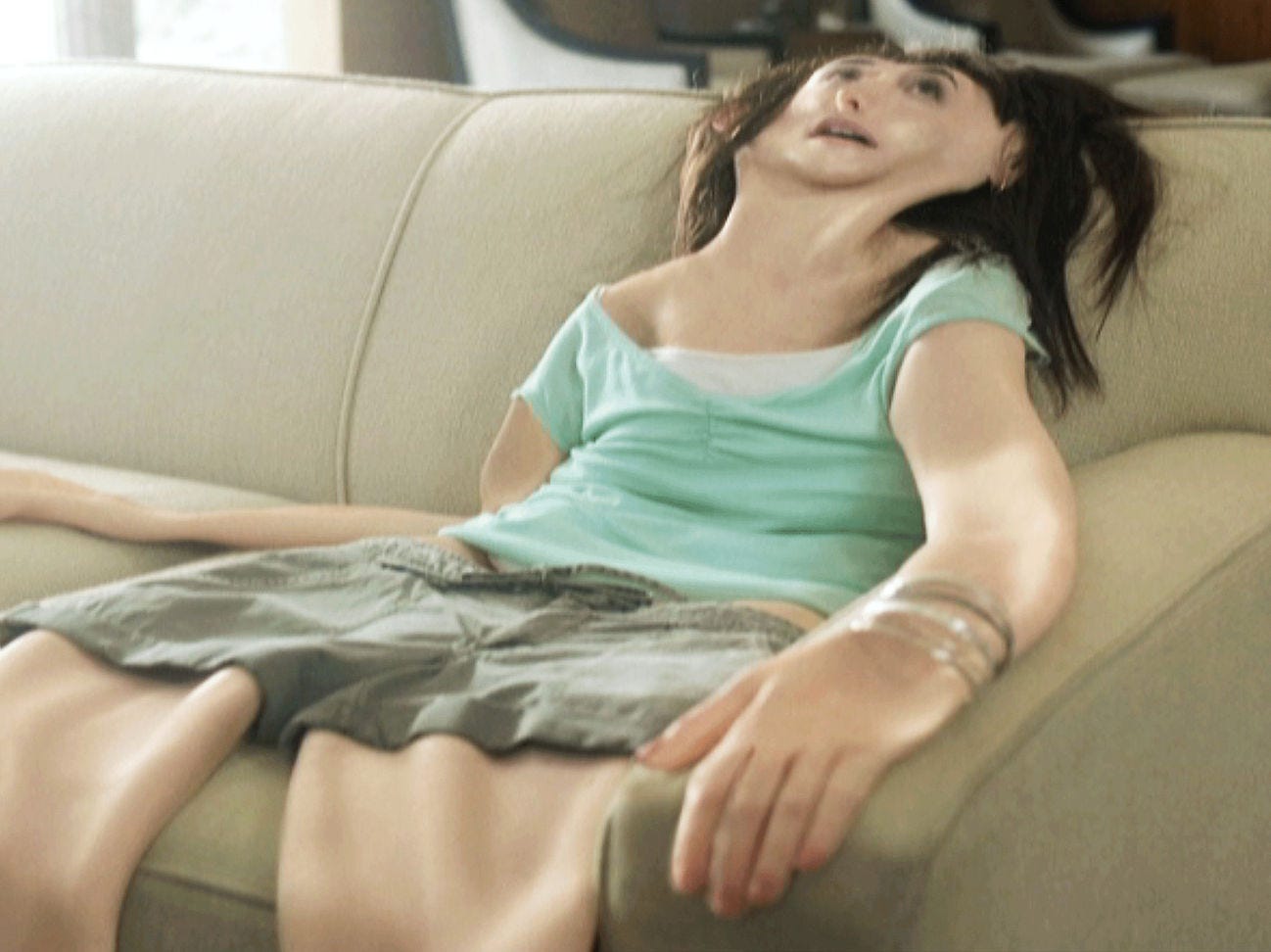
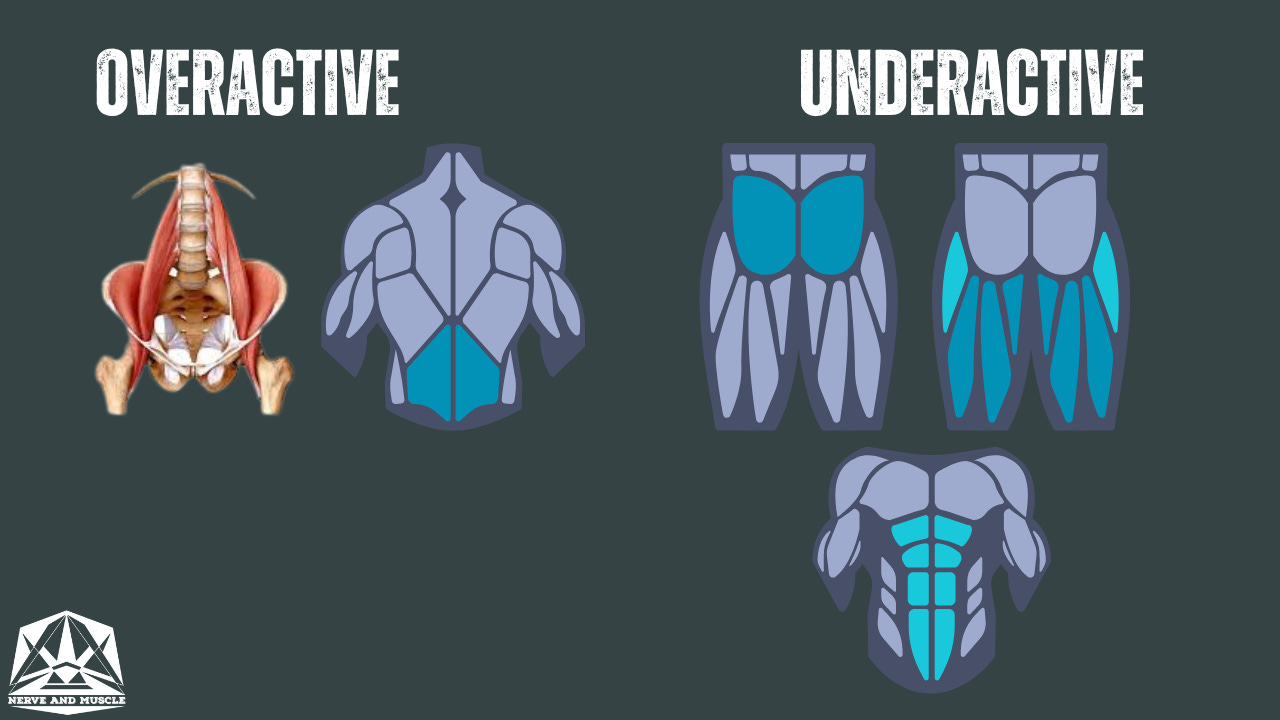

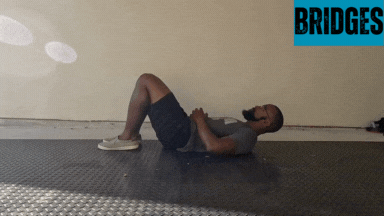

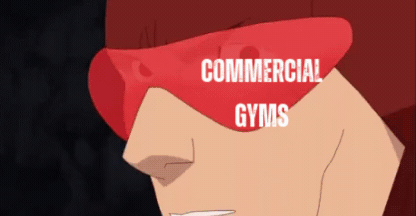
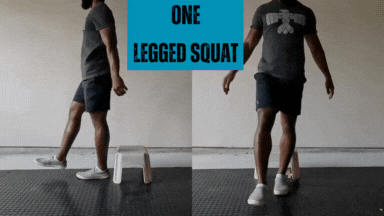

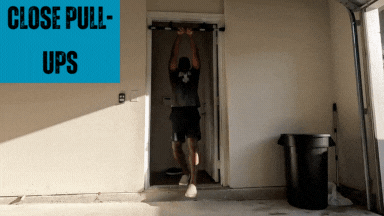
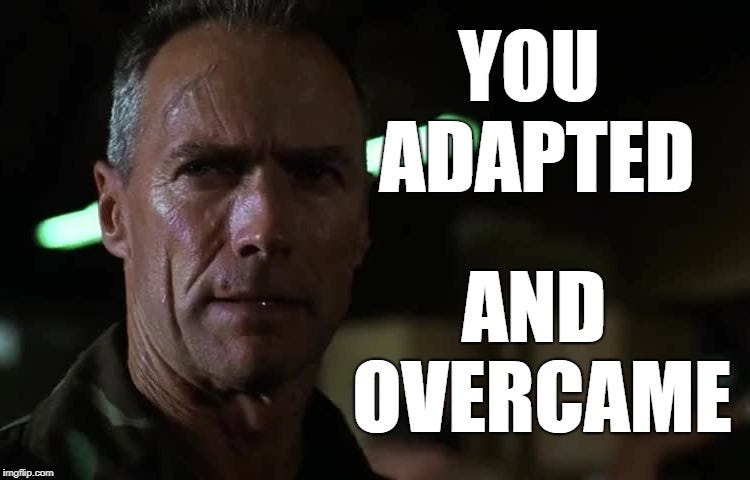

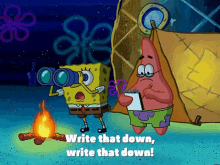


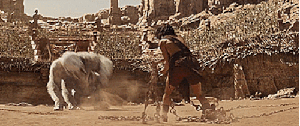
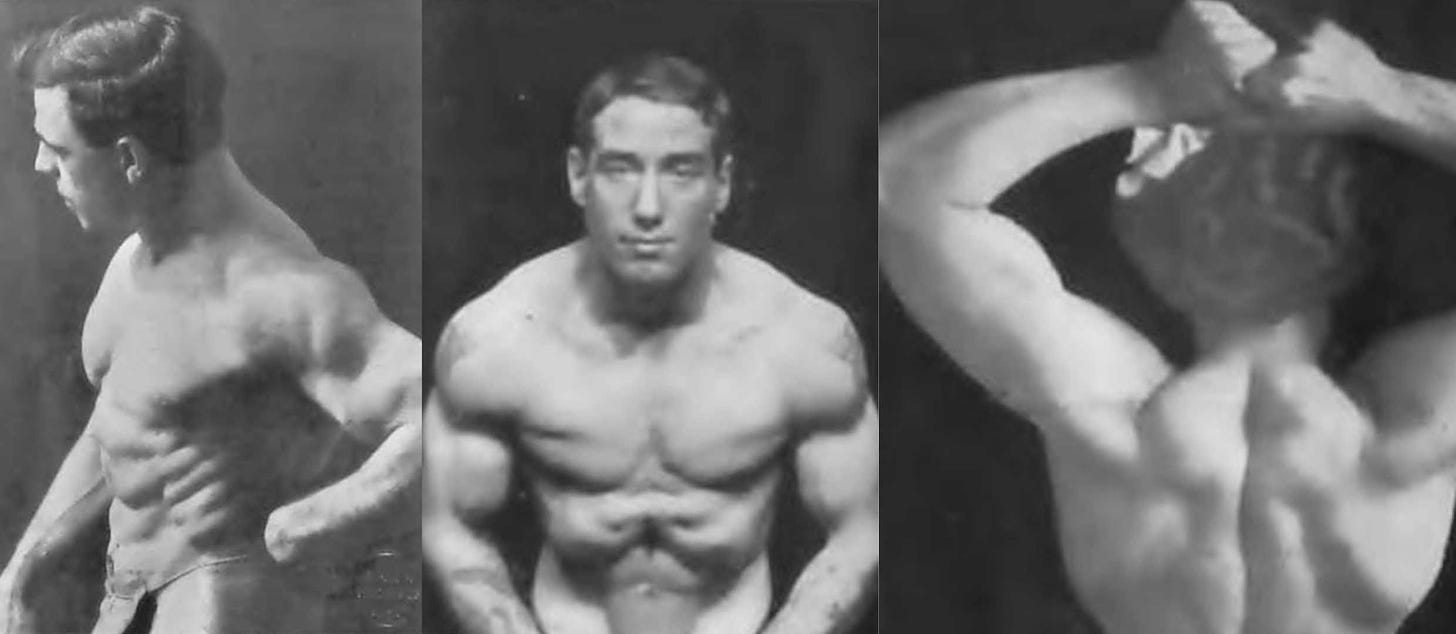
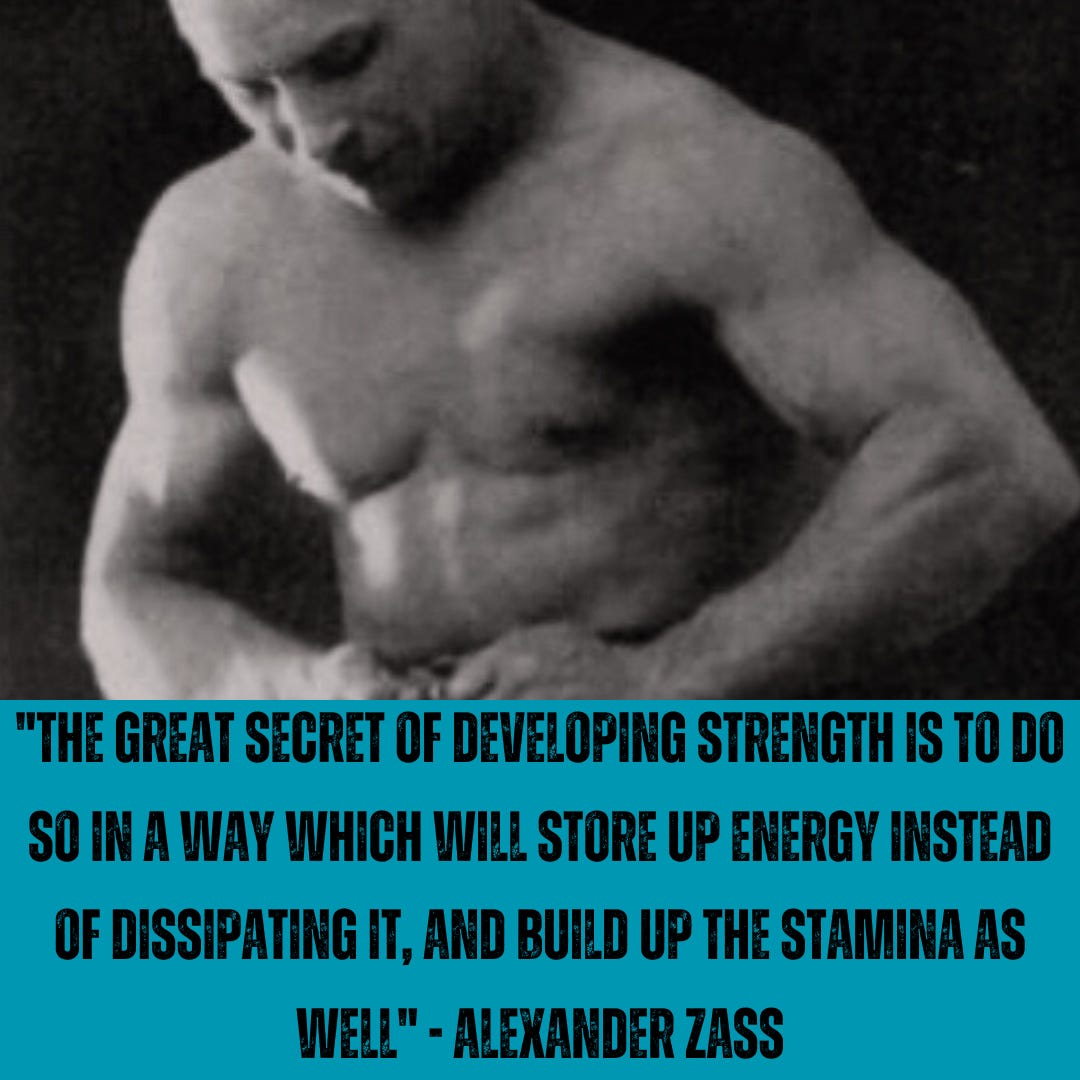
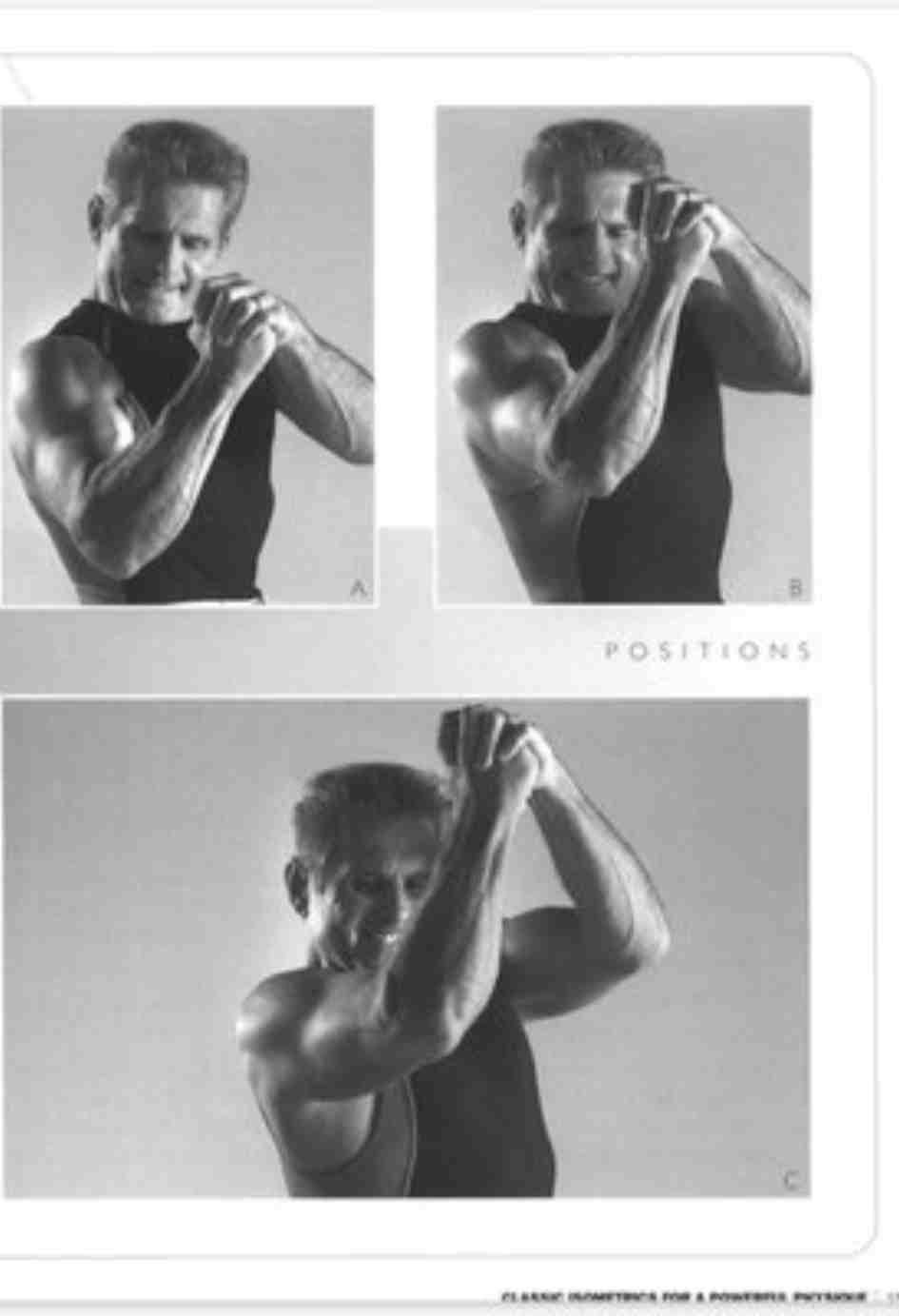
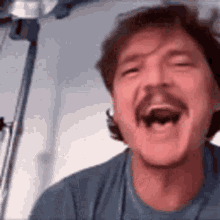
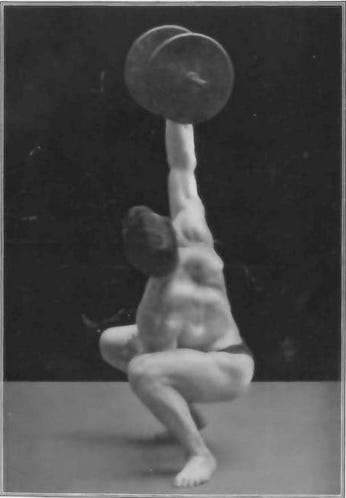
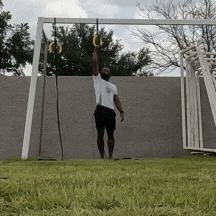
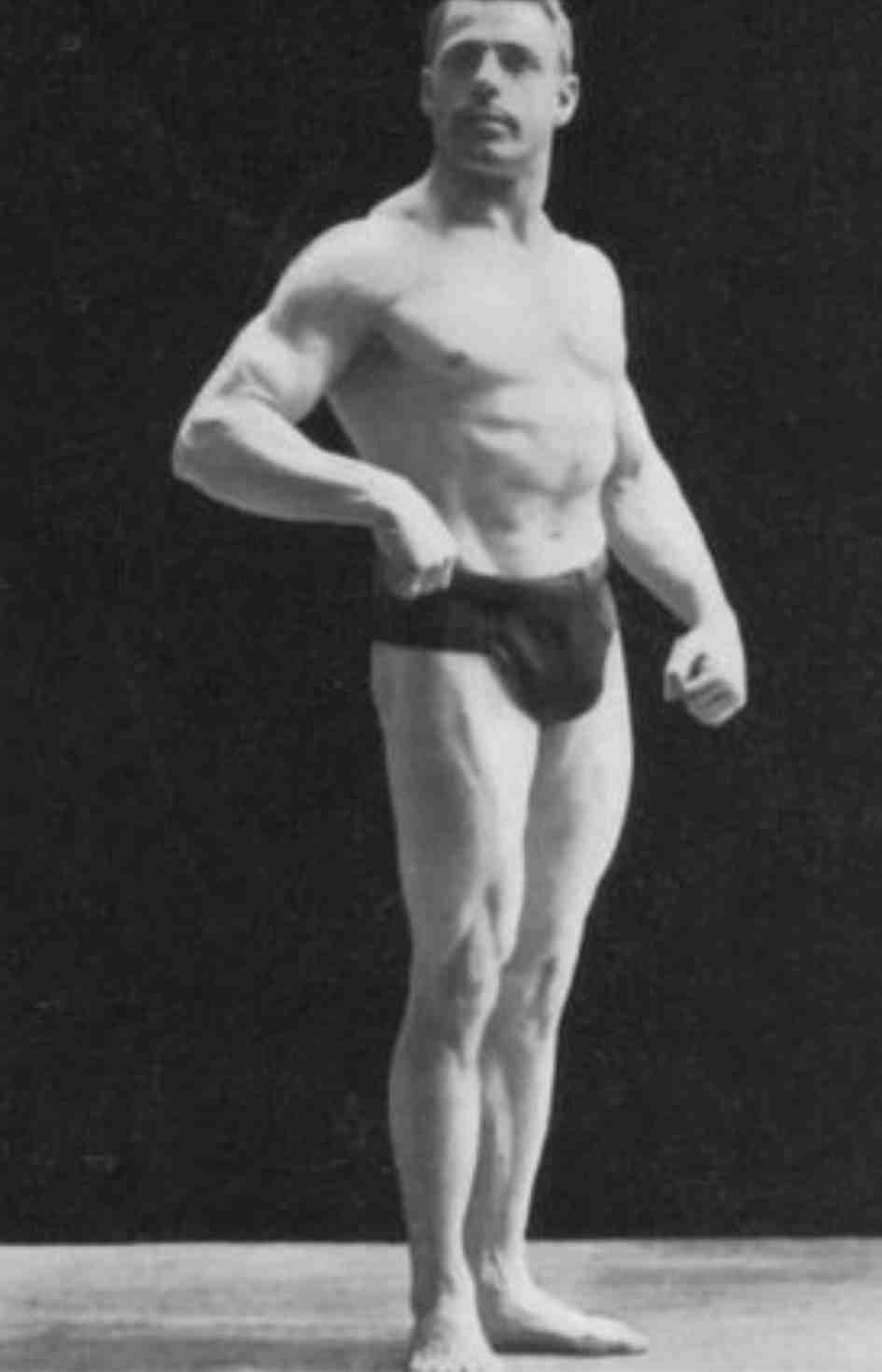


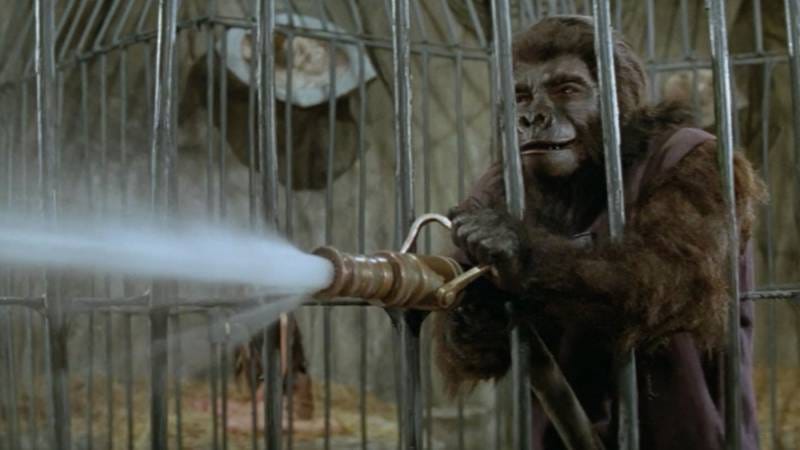
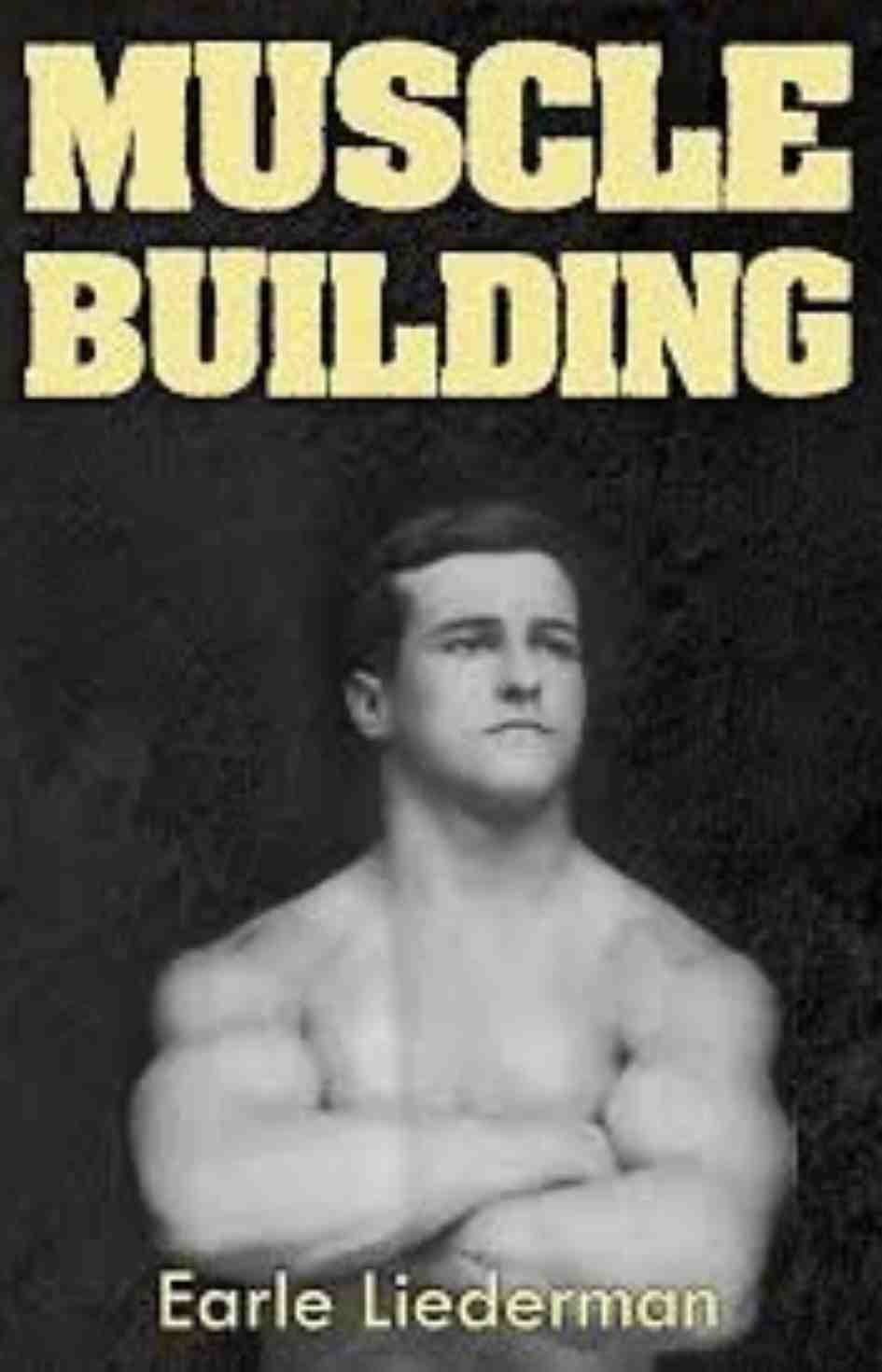
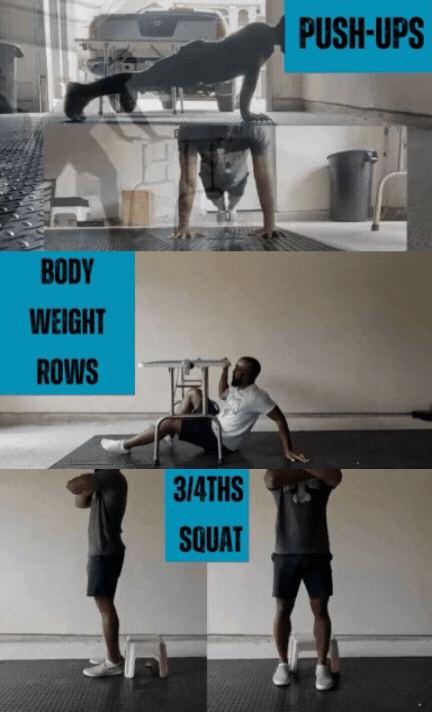
I wonder if isometrics would have the same positive effect on bone structure as weight lifting?
I see a lot of people who walk strangely and often wonder how many of them are curable. Unfortunately, our medical systems generally ignore them - there is no clear pain, so they don't complain, because their body compensates. And even if they are cured, perhaps by walking backwards or other exercises, the cure can only be ignored by our current medical paradigm.